

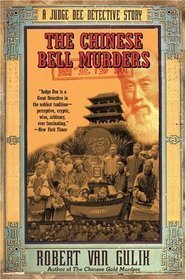
Books in series

#1
Celebrated Cases of Judge Dee
An Authentic Eighteenth-Century Chinese Detective Novel
1949
Long before Western writers had even conceived the idea of writing detective stories, the Chinese had developed a long tradition of literary works that chronicled the cases of important district magistrates. These judges held a unique position. As "fathers to the people" they were at once judge and detective, responsible for all aspects of keeping the peace and for discovering, capturing, and punishing criminals.
One of the most celebrated historical magistrates was Judge Dee, who lived in the seventh century A.D. This book, written in the eighteenth century by a person well versed in the Chinese legal code, chronicles three of Judge Dee's most celebrated cases, interwoven to form a novel. A double murder among traveling merchants, the fatal poisoning of a bride on her wedding night, and an unsolved murder in a small town under Judge Dee's jurisdiction—these are the crimes. They take Judge Dee up and down the great silk routes, through clever disguises, into ancient graveyards where he consults the spirits of the dead, and through some clever deduction.
After translating Dee Goong An, Robert Van Gulik continued the adventures of Judge Dee in fiction he wrote himself. This, however is the only place where you can find the originals of Judge Dee, the venerable Sergeant Hoong, the treacherous Ma Joong, and the other members of Dee's detective force. As the first publication of Dee Goong An in the United States, this edition makes these cases accessible for the first time.
While the cases are superb for reading, they also show the Chinese system of law enforcement and legal proceedings (which are quite different from Western forms). Van Gulik has provided a thorough introduction and appendix with much information on Chinese detective novels, the Chinese system of justice, and particularly relevant aspects of Chinese law that play a part in these stories.

#2
The Chinese Maze Murders
1951
A.D. 670
Poisoned plums, a cryptic scroll picture, passionate love letters, and a hidden murderer with a penchant for torturing and killing women lead Judge Dee to the heart of the Governor’s garden maze and the answers to three interwoven mysteries. The Chinese Maze Murders represents Robert van Gulik’s first venture into writing suspense novels after the success of Dee Gong An, his translation of an anonymous Chinese detective novel from the sixteenth century.
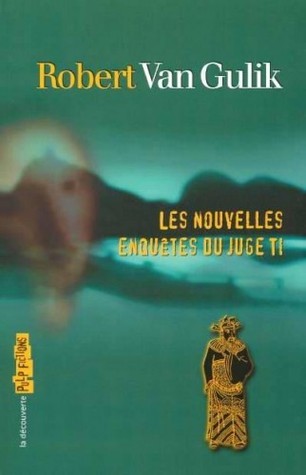
#2, 10, 16, 17
Les nouvelles enquêtes du juge Ti
2007
En 630 naît le juge Ti à Tai-yuan. Il travaillera également comme secrétaire aux Archives impériales. En 663, nommé magistrat, il va être en charge d'affaires criminelles.
Table des matières:
● La Perle de l'Empereur (roman, The Emperor's Pearl),
● Le Collier de la princesse (roman, Necklace and Calabash),
● Assassins et poètes (roman, Poets and Murder),
● Mystère du labyrinthe (roman, The Chinese Maze Murders ).

#3
The Chinese Bell Murders
1958
A.D. 668
Meet Judge Dee, the detective lauded as the "Sherlock Holmes of ancient China" — Fans of Alexander McCall Smith's No. 1 Ladies' Detective Agency series will thrill to this reissue of the first volume in Robert van Gulik's classic Chinese Murders series. The Chinese Bell Murders introduces the great Judge Dee, a magistrate of the city of Poo-yang in ancient China.
In the spirit of ancient Chinese detective novels, Judge Dee is challenged by three cases. First, he must solve the mysterious murder of Pure Jade, a young girl living on Half Moon Street. All the evidence points to the guilt of her lover, but Judge Dee has his doubts. Dee also solves the mystery of a deserted temple and that of a group of monks' terrific success with a cure for barren women.
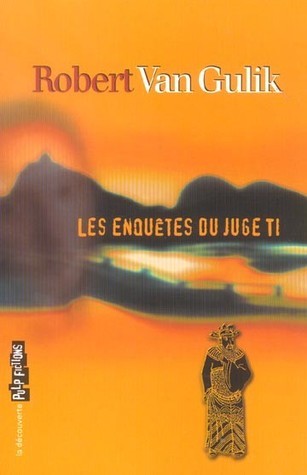
#3, 7
Les enquêtes du juge Ti
2004
En 630 naît le juge Ti à Tai-yuan. Il travaillera également comme secrétaire aux Archives impériales. En 663, nommé magistrat, il va être en charge d'affaires criminelles.
Table des matières:
● Le Matin du singe (nouvelle, The Morning of the Monkey),
● Le Monastère hanté (roman, The Haunted Monastery),
● Meurtre sur l'étang de lotus (nouvelle, The Murder on the Lotus Pond),
● Le Squelette sous cloche (roman, The Chinese Bell Murders),
● Les deux Mendiants (nouvelle, The Two Beggars),
● La fausse épée (nouvelle, The Wrong Sword),
● Le Pavillon rouge (roman, The Red Pavilion).

#4
The Chinese Gold Murders
1959
A.D. 663
In this, the second book in Robert van Gulik's classic mystery series of ancient China, Judge Dee must look into the murder of his predecessor. His job is complicated by the simultaneous disappearance of his chief clerk and the new bride of a wealthy local shipowner. Meanwhile, a tiger is terrorizing the district, the ghost of the murdered magistrate stalks the tribunal, a prostitute has a secret message for Dee, and the body of a murdered monk is discovered to be in the wrong grave. In the end, the judge, with his deft powers of deduction, uncovers the one cause for all of these seemingly unrelated events.
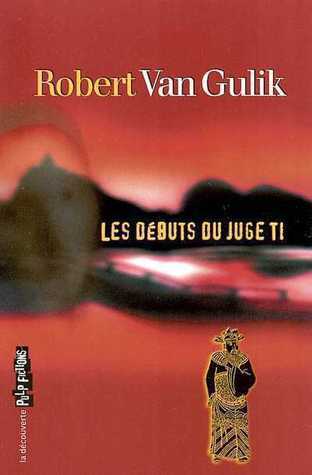
#4, 5
Les débuts du juge Ti
2004
En 630 naît le juge Ti à Tai-yuan. Il travaillera également comme secrétaire aux Archives impériales. En 663, nommé magistrat, il va être en charge d'affaires criminelles.
Table des matières:
● Trafic d'or sous les T'ang (roman, The Chinese Gold Murders),
● Cinq nuages de félicité (nouvelle, Five Auspicious Clouds),
● Une Affaire de ruban rouge (nouvelle, The Red Tape Murder),
● Le Passager de la pluie (nouvelle, He Came with the Rain),
● Le Paravent de laque (roman, The Lacquer Screen),
● Meurtre sur un bateau-de-fleurs (roman, The Chinese Lake Murders).

#5
The Chinese Lake Murders
1960
A.D. 666
The Chinese Lake Murders describes how Judge Dee solves three difficult cases in A.D. 666, shortly after he has been appointed magistrate of Han-yuan.
"[Robert van Gulik] deftly interweaves three criminal cases involving exotic yet universally recognizable characters, then has his Judge Dee provide a surprising yet most plausible solution."—New York Times Book Review
Robert Van Gulik (1910-67) was a Dutch diplomat and an authority on Chinese history and culture. He drew his plots from the whole body of Chinese literature, especially from the popular detective novels that first appeared in the seventeenth century.

#6
The Chinese Nail Murders
1961
A.D. 676
In the fifth installment of Robert Van Gulik's ancient Chinese mystery series based on historical court records, detective Judge Dee is appointed to the magistrate of Pei-chow - a distant frontier district in the barren north of the ancient Chinese Empire. It is here that he is faced with three strange and disturbing crimes: the theft of precious jewels, the disappearance of a girl in love, and the fiendish murder involving the nude, headless body of a woman. And even more curious, the crimes seem to be linked together by clues from a popular game of the period, the Seven Board.
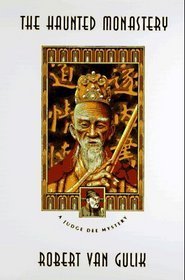
#7
The Haunted Monastery
1961
A.D. 666
Judge Dee and his entourage, seeking refuge from a mountain storm, become trapped in a Taoist monastery, where the Abbott Jade mysteriously dies after delivering an ecstatic sermon. The monks call it a supernatural experience, but the judge calls it murder. Recalling the allegedly accidental deaths of three young women in the same monastery, Judge Dee seeks clues in the eyes of a cat to solve cases of impersonation and murder. A painting by one of the victims reveals the truth about the killings, propelling the judge on a quest for justice and revenge.
"Entertaining, instructive, and impressive."—Times Literary Supplement

#8
The Red Pavilion
1961
A.D. 668
A chance encounter with Autumn Moon, the most powerful courtesan on Paradise Island, leads Judge Dee to investigate three deaths. Although he finally teases the true story from a tangled history of passion and betrayal, Dee is saddened by the perversion, corruption, and waste of the world "of flowers and willows" that thrives on prostitution.

#9
The Lacquer Screen
1962
A.D. 663
Early in his career, Judge Dee visits a senior magistrate who shows him a beautiful lacquer screen on which a scene of lovers has been mysteriously altered to show the man stabbing his lover. The magistrate fears he is losing his mind and will murder his own wife. Meanwhile, a banker has inexplicably killed himself, and a lovely lady has allowed Dee's lieutenant, Chiao Tai, to believe she is a courtesan. Dee and Chiao Tai go incognito among a gang of robbers to solve this mystery, and find the leader of the robbers is more honorable than the magistrate.
"One of the most satisfyingly devious of the Judge Dee novels, with unusual historical richness in its portrayal of the China of the T'ang dynasty."-—New York Times Book Review
"Even Judge Dee is baffled by Robert van Gulik's new mysteries in The Lacquer Screen. Disguised as a petty crook, he spends a couple of precarious days in the headquarters of the underworld, hobnobbing with the robber king. Dee's lively thieving friends furnish some vital clues to this strange and fascinating jigsaw."-—The Spectator
"So scrupulously in the classic Chinese manner yet so nicely equipped with everything to satisfy the modern reader."-—New York Times
Robert Van Gulik (1910-67) was a Dutch diplomat and an authority on Chinese history and culture. He drew his plots from the whole body of Chinese literature, especially from the popular detective novels that first appeared in the seventeenth century.
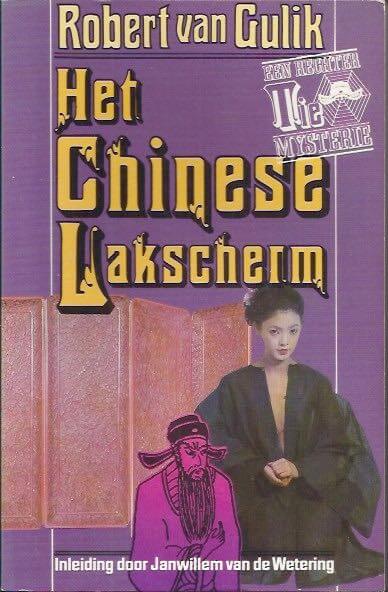
#9
Het Chinese Lakscherm
1962
A.D. 663
Early in his career, Judge Dee visits a senior magistrate who shows him a beautiful lacquer screen on which a scene of lovers has been mysteriously altered to show the man stabbing his lover. The magistrate fears he is losing his mind and will murder his own wife. Meanwhile, a banker has inexplicably killed himself, and a lovely lady has allowed Dee's lieutenant, Chiao Tai, to believe she is a courtesan. Dee and Chiao Tai go incognito among a gang of robbers to solve this mystery, and find the leader of the robbers is more honorable than the magistrate.
"One of the most satisfyingly devious of the Judge Dee novels, with unusual historical richness in its portrayal of the China of the T'ang dynasty."-—New York Times Book Review
"Even Judge Dee is baffled by Robert van Gulik's new mysteries in The Lacquer Screen. Disguised as a petty crook, he spends a couple of precarious days in the headquarters of the underworld, hobnobbing with the robber king. Dee's lively thieving friends furnish some vital clues to this strange and fascinating jigsaw."-—The Spectator
"So scrupulously in the classic Chinese manner yet so nicely equipped with everything to satisfy the modern reader."-—New York Times
Robert Van Gulik (1910-67) was a Dutch diplomat and an authority on Chinese history and culture. He drew his plots from the whole body of Chinese literature, especially from the popular detective novels that first appeared in the seventeenth century.

#10
The Emperor's Pearl
1963
It all begins on the night of the Poo-yang dragonboat races in 699 A.D.: a drummer in the leading boat collapses, and the body of a beautiful young woman turns up in a deserted country mansion. There, Judge Dee—tribunal magistrate, inquisitor, and public avenger—steps in to investigate the murders and return order to the Tang Dynasty.
In The Emperor’s Pearl, the judge discovers that these two deaths are connected by an ancient tragedy involving a near-legendary treasure stolen from the Imperial Harem one hundred years earlier. The terrifying figure of the White Lady, a river goddess enshrined on a bloodstained altar, looms in the background of the investigation. Clues are few and elusive, but under the expert hand of Robert van Gulik, this mythic jigsaw puzzle assembles itself into a taut mystery.
“If you have not yet discovered Judge Dee and his faithful Sgt. Hoong, I envy you that initial pleasure which comes from the discovery of a great detective story. For the magistrate of Poo-yang belongs in that select group of fictional detectives headed by the renowned Sherlock Holmes.”—Robert Kirsch, Los Angeles Times
“The title of this book and the book itself have much in common. Each is a jewel, a rare and precious find.”—Atlanta Times

#11
The Monkey and The Tiger
1965
A.D. 666 and A.D. 676
The Monkey and The Tiger includes two detective stories, "The Morning of the Monkey" and "The Night of the Tiger." In the first, a gibbon drops an emerald in the open gallery of Dee's official residence, leading the judge to discover a strangely mutilated body in the woods—and how it got there. In the second, Dee is traveling to the imperial capital to assume a new position when he is separated from his escort by a flood. Marooned in a large country house surrounded by fierce bandits, Dee confronts an apparition that helps him solve a mystery.
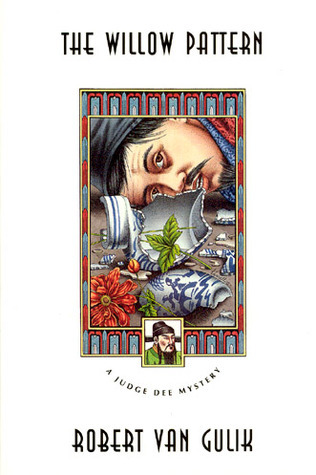
#12
The Willow Pattern
1965
A.D. 677
As Judge Dee copes with the administration of the plague-ridden Imperial Capital, he must also bring his skills to bear on the mystery of two seemingly unconnected murders that could mean the extinction of the city's oldest, most aristocratic families.

#13
Murder in Canton
1966
A.D. 681
Murder In Canton takes place in 680 A.D. Judge Dee, recently promoted to Lord Chief Justice, is sent incognito to Canton to investigate the disappearance of a court censor. With the help of his trusted lieutenants Chiao Tai and Tao Gan, and that of a clever blind girl who collects crickets, Dee solves the traditional three puzzles— 'The Vanished Censor, The Smaragdine Dancer, and The Golden Bell.'
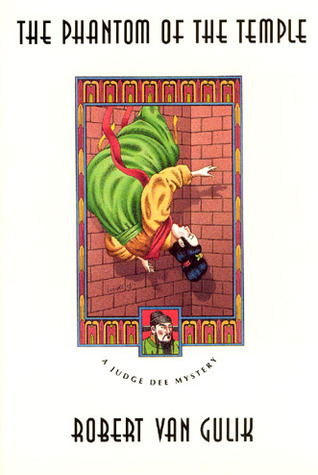
#14
The Phantom of the Temple
1966
A.D. 670
On a wooded hill in the Lan-fang district, a phantom stalks in a century-old Buddhist temple and three mysteries unfold-the vanishing of a wealthy merchant's daughter, the disapperance of twenty bars of gold, and the discovery of a decapitated corpse. In the Phantom of the Temple, the clever Judge Dee pieces together these strange occurrences to reveal one complex and gruesome plot.

#15
Judge Dee at Work
Eight Chinese Detective Stories
1967
“大唐狄公案”成功地造就了“中国的福尔摩斯”,并被译成多种外文出版,在中国与世界文化交流史上留下重重的一笔。译文版“大唐狄公案”计划出版十五种,由研究高罗佩多年的张凌担纲翻译并撰写兼具学术性和可读性的注释和译后记,是目前市面上仅见的一人独立翻译的版本。“大唐狄公案”第二辑包括《漆屏案》《朝云观》《红楼案》《御珠案》《断案集》,每卷配有高罗佩本人创作的插图,古韵盎然,令人赏心悦目。
《断案集》包括八个短篇。《五祥云》讲述公元663年,狄公任蓬莱县令时,独自勘破贺夫人自尽一案;《公文案》讲述公元663年,狄公任蓬莱县令时,由马荣乔泰协助,勘破苏把总被害一案;《雨中客》讲述公元663年,狄公任蓬莱县令时,独自勘破当铺掌柜被杀一案;《莲池案》讲述公元667年,狄公任汉源县令时,由马荣协助,破获老诗人孟岚被杀一案;《两乞丐》讲述公元669年1月15日,狄公任蒲阳县令时,与洪亮勘破教书先生被杀一案;《夺命剑》讲述公元669年,狄公任蒲阳县令时,与马荣乔泰勘破卖艺少年被害一案;《太子棺》讲述公元672年,狄公任兰坊县令时,在大石口县,独自勘破两桩疑案;《除夕案》讲述公元674年,狄公任兰坊县令时,独自破获了一桩离奇案件。

#16
Necklace and Calabash
1967
A.D. 668
Due to its proximity to the Water Palace, the summer residence of the Emperor's favorite daughter, Riverton lies within a Special Area administered by the military. To Judge Dee, returning to his district of Poo-yang, the peaceful town promises a few days' fishing and relaxation. But it is not to be. A chance meeting with a Taoist recluse, a gruesome body fished out of the river, strange guests at the Kingfisher Inn, a princess in distress—before long the judge is facing one of the most intricate and baffling mysteries of his career.
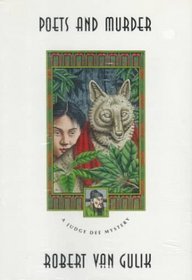
#17
Poets and Murder
1968
A.D. 668
Master detective Judge Dee sets out to solve a puzzling double murder and discovers that complicated passions lurk beneath the seemingly tranquil landscape of academic life. A student has been murdered; a beautiful poetess is accused of whipping her maidservant to death; and further mysteries lie in the shadows of the Shrine of the Black Fox.
#18
The Morning of the Monkey
1964
Judge Dee finds a unique gold ring with minute bloodstains, then a fingerless corpse.
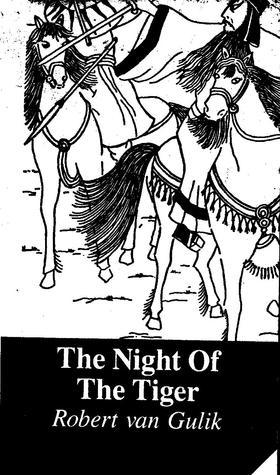
#19
The Night of the Tiger
1963
A Chinese detective story starring Judge Dee, who is trapped in a fortified country manor under siege by the Flying Tigers, a gang of bandits.

#20
Red Tape Murder
1986
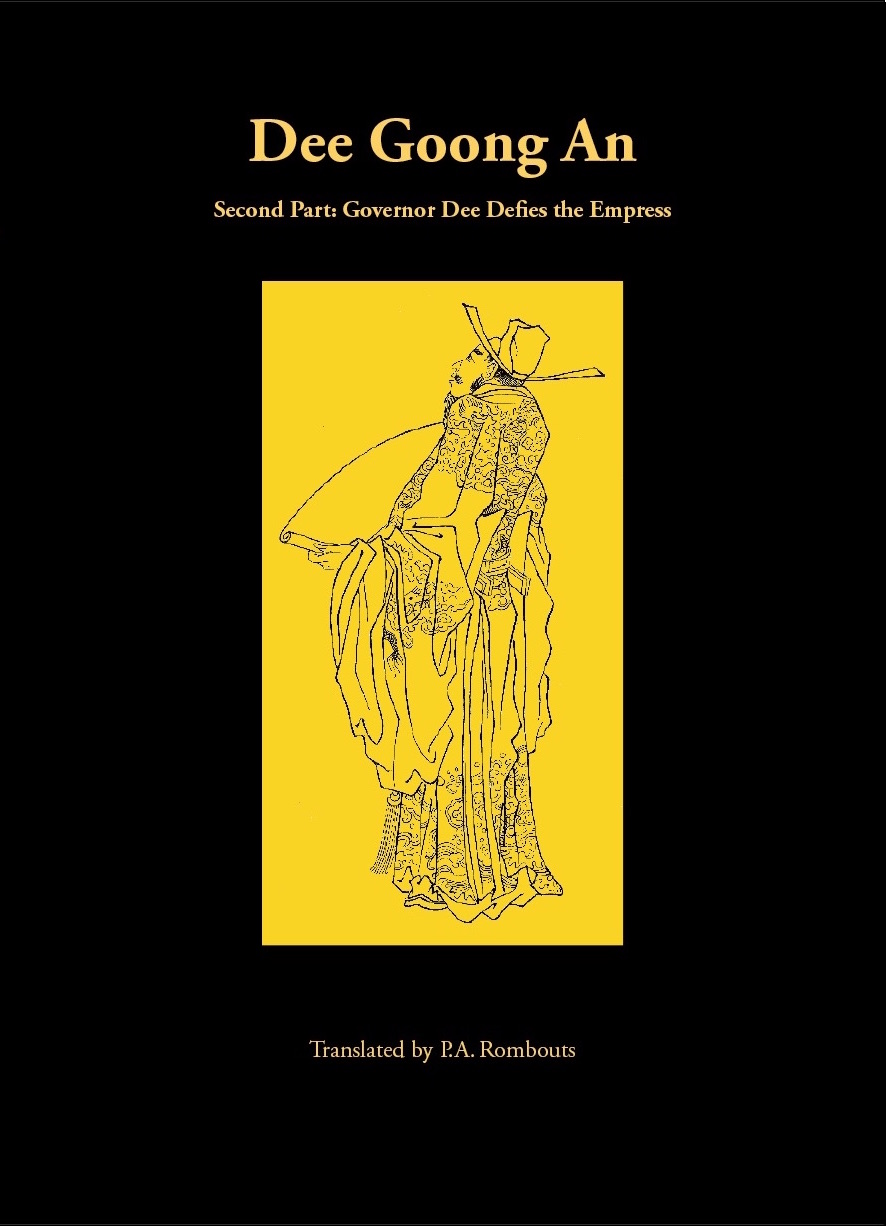
#31
Dee Goong An, Second Part
Judge Dee Defies the Empress
2016
In 1949, while posted in Tokyo, Robert van Gulik published a translation titled Dee Goong An: Three Murder Cases Solved by Judge Dee in a limited edition of twelve hundred copies. In 1976, Dover Publications Inc. published a mass-market paperback edition, making this book accessible to the general public.
In the afterword to his translation, Van Gulik noted that his translation covered the first thirty chapters of a Chinese book entitled Four Great Strange Cases of the Reign of Empress Wu. These chapters deal with the early part of Judge Dee’s career as a district magistrate, when he solved crimes and punished criminals. He did not translate the remaining thirty-four chapters that deal with a later part of Dee’s career as a statesman at the imperial court in the capital.
The present book is a translation of the second part of the Chinese novel, describing how Governor Dee rids the court of Empress Wu Zetian of treacherous officials and how he convinces the Empress to keep her own son as the crown prince, instead of replacing him with her nephew, Wu Chengsi. Although the various plots in these chapters are fictional, the general setting does reflect the corruption, strife and degeneration at the Tang court during Empress Wu’s reign. Quite a number of the characters in this novel are historical figures. The author has woven into his storylines numerous events that can be traced back to the historical records in the Old Tang History.
The present story is not a detective story, but a story about perverse behaviour and power struggles at the imperial court. Readers who expect to find another Judge Dee story here are going to be disappointed; readers ready to see a ruthless and diabolically clever Governor Dee who finds inventive solutions to knotty problems should brace themselves for the offensive in which Governor Dee chastises his adversaries.
\- from Translator's Preface
Author

Robert van Gulik
Author · 31 books
Robert Hans van Gulik was a Dutch diplomat best known for his Judge Dee stories. His first published book, The Celebrated Cases of Judge Dee, was a translation of an eighteenth-century Chinese murder mystery by an unknown author; he went on to write new mysteries for Judge Dee, a character based on a historical figure from the seventh century. He also wrote academic books, mostly on Chinese history.